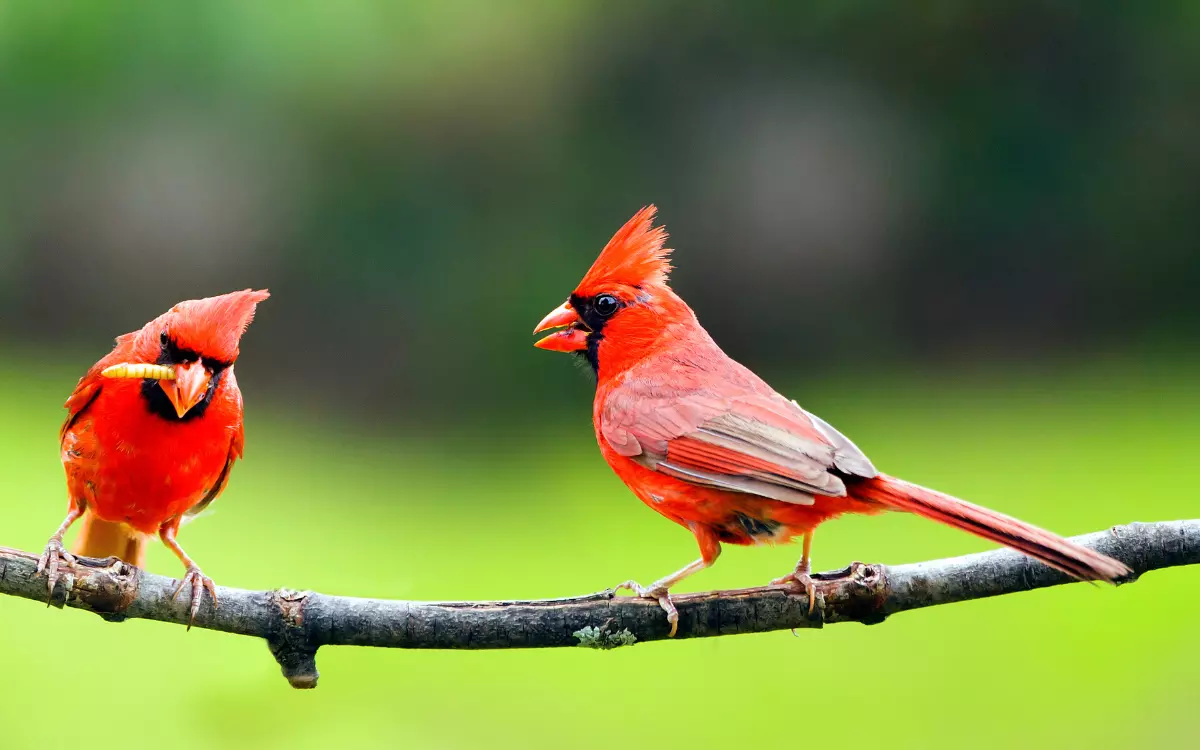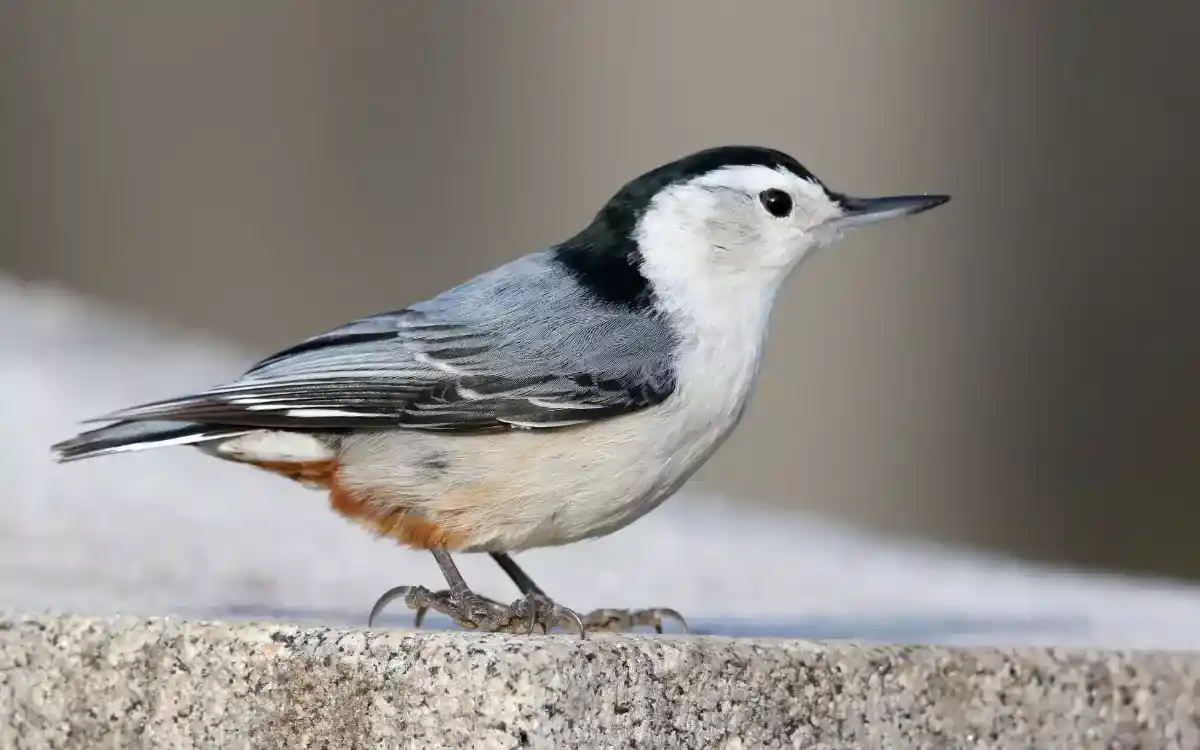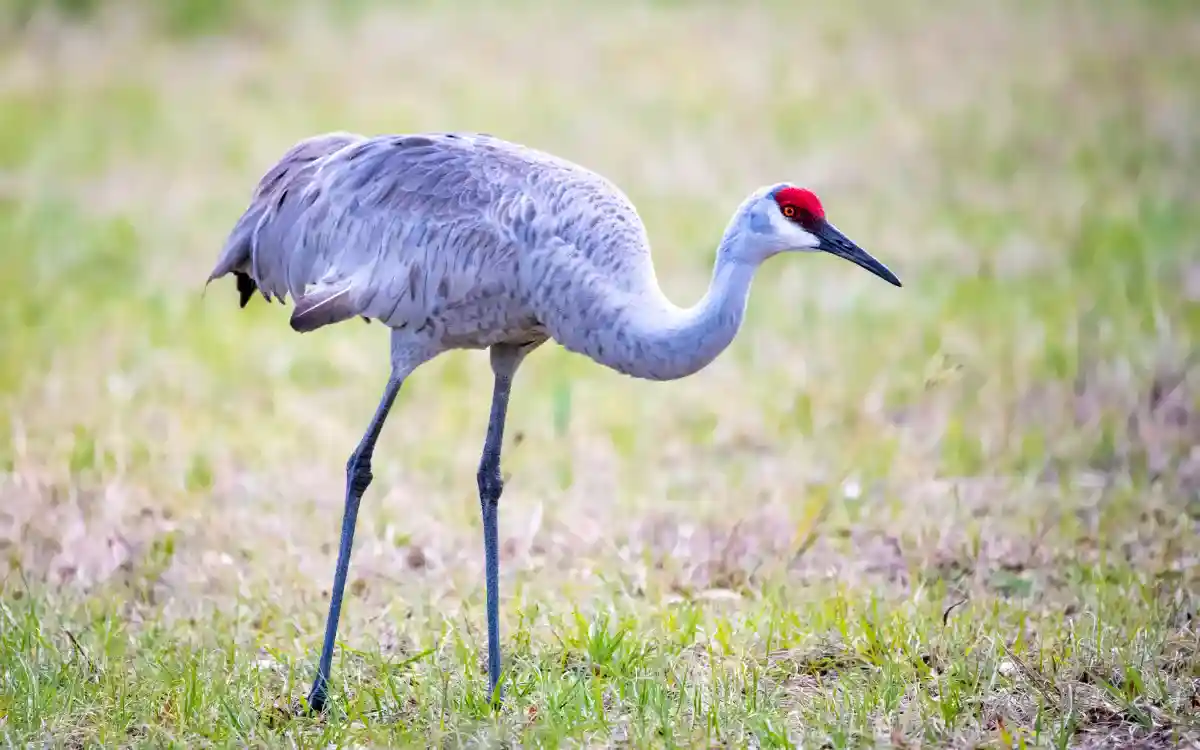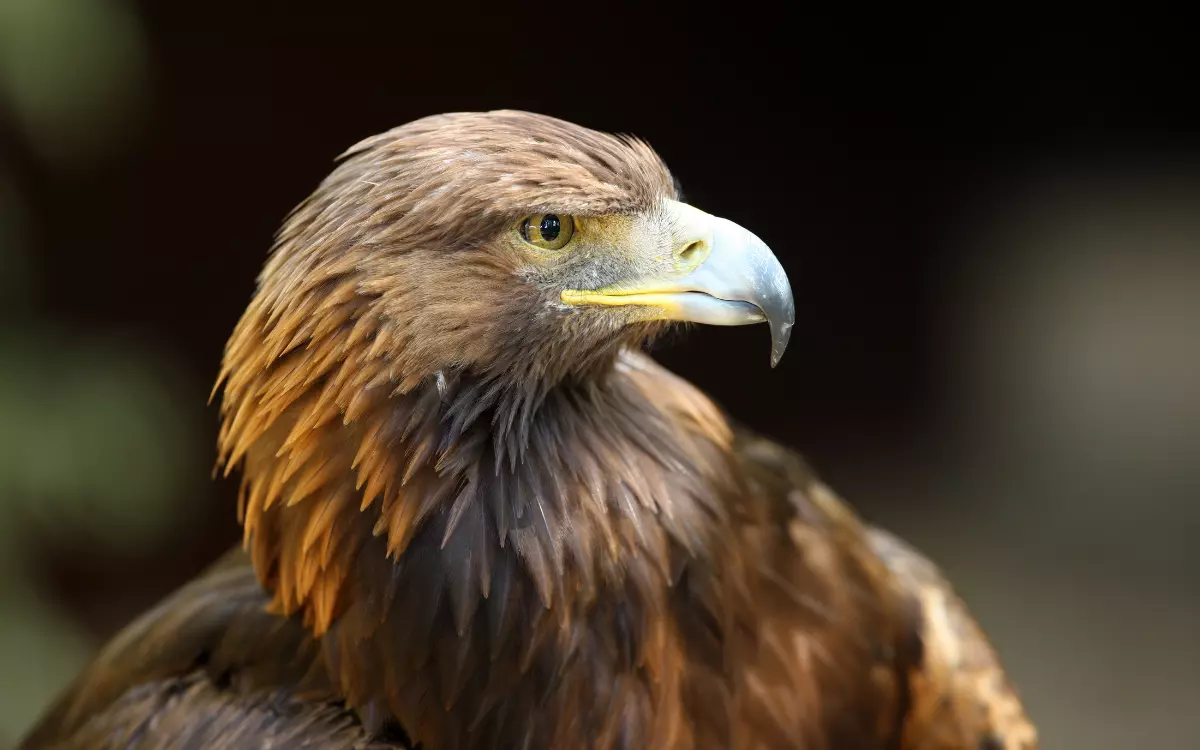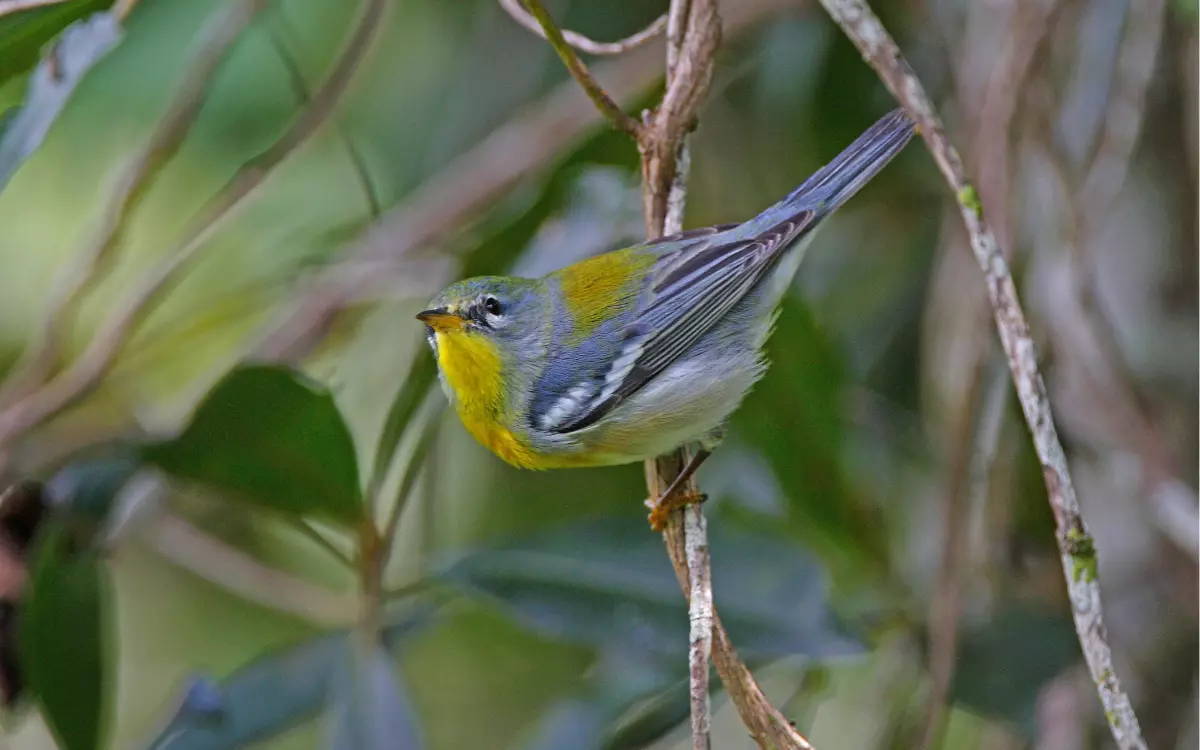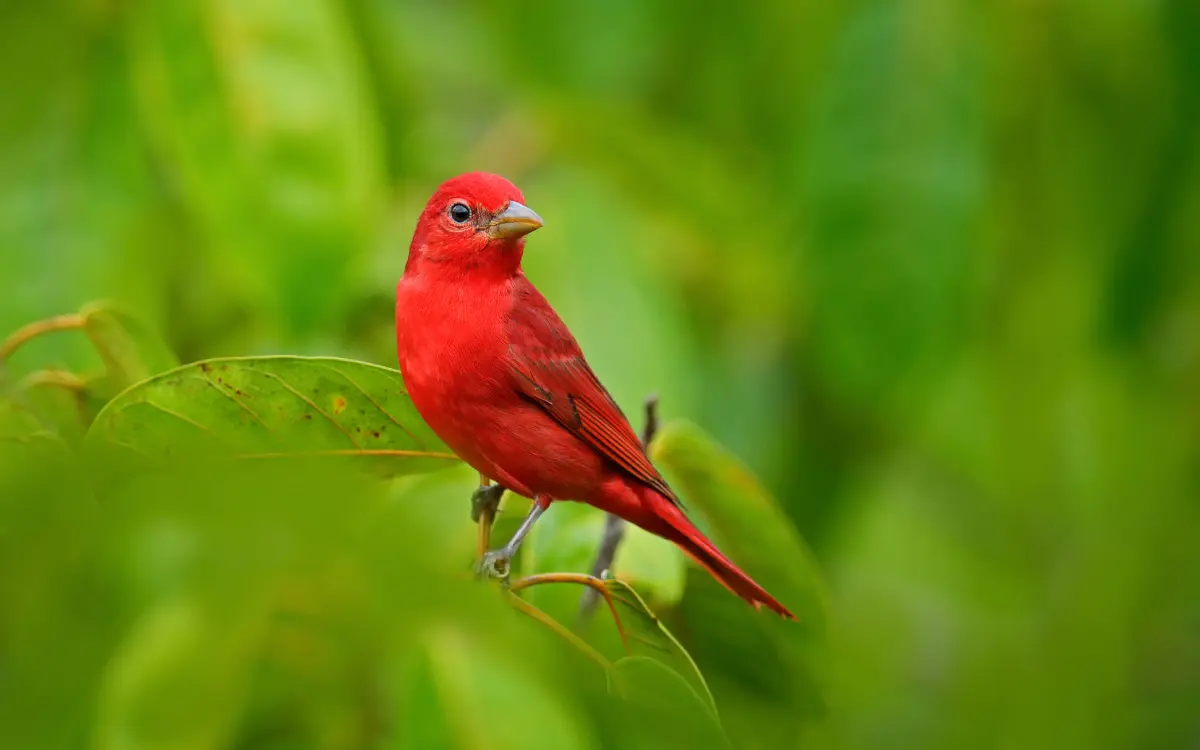10 Hummingbirds of South Carolina: A complete Guide
Hummingbirds of South Carolina are a charming sight, and in this article, we’ll Expose the energetic world of these tiny marvels that grace the Palmetto State.
10 Types species of Hummingbirds in South Carolina:
1. Ruby-throated hummingbird (Archilochus colubris):

The Ruby-Throated Hummingbird is a small, colorful bird with a bright red throat and greenback. It’s the only hummingbird that nests east of the Mississippi River in places like gardens and forests.
These birds are amazing fliers, able to flap their wings super fast and hover like a helicopter to drink nectar from flowers. They even fly non-stop over 500 miles across the Gulf of Mexico during migration!
They have a special long tongue to sip nectar and help plants grow by spreading pollen. These tiny birds are important for our environment and fun to watch.
- Length: 2.8 – 3.5 in (7- 9 cm)
- Weight: 0.1 – 0.2 oz (2 – 6 gm)
- Wingspan:3.1 – 4.3 in (8 – 11 cm)
2. Black-Chinned Hummingbird (Archilochus alexandri):

The Black-Chinned Hummingbird has a shiny green back and a black chin, with a hidden purple stripe under it. They breed in the western United States, from British Columbia to Baja California.
These birds are rare visitors to South Carolina, mainly seen in winter. They’re special because they’re not usually found in this state. They like to eat nectar from flowers and feeders, helping plants grow by spreading pollen around.
Spotting a Black-Chinned Hummingbird in South Carolina is a unique and exciting experience for bird watchers!
- Length: 3.75 in (9.5 cm)
- Weight: 0.1 – 0.2 oz (2 – 6 gm)
- Wingspan: 4.3 in (11 cm)
3. Buff-bellied hummingbird (Amazilia yucatanensis):
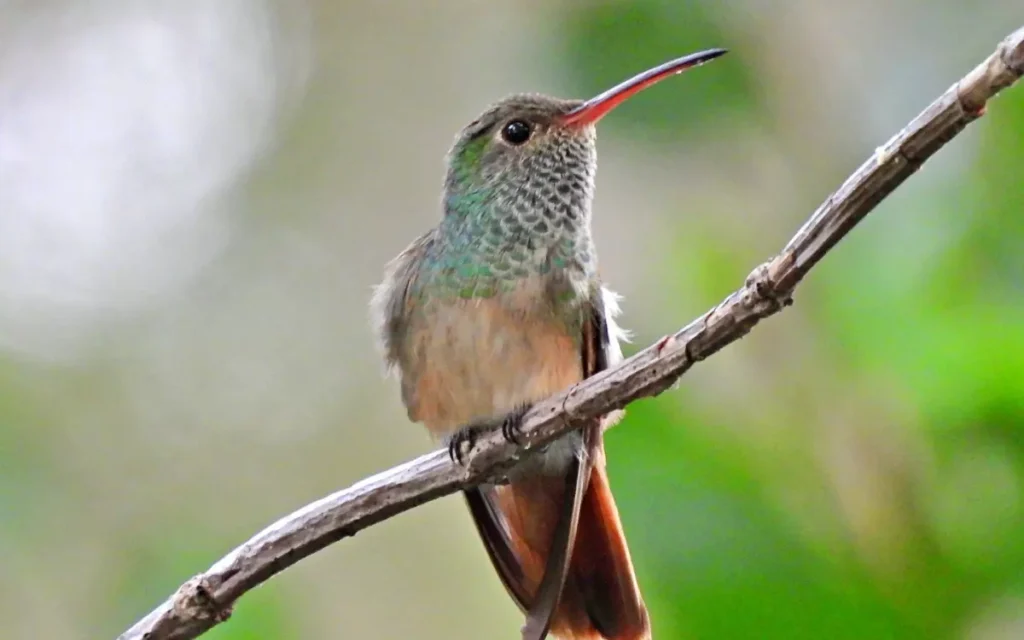
The Buff-Bellied Hummingbird is a special bird that doesn’t travel far in winter. They mostly stay in southern Texas and Mexico, but sometimes visit South Carolina. They eat nectar from flowers and tiny insects.
This helps them to stay quick and strong. It’s rare to see these birds in South Carolina, so if you spot one, it’s quite exciting! They bring a bit of surprise and joy to those who love watching birds in this area.
- Length: 3.9 – 4.3 in (10 – 11 cm)
- Weight: 0.1 – 0.1 oz (2 – 4 gm)
- Wingspan: around 4 – 4.5 in (10.2 – 11.4 cm)
4. Rufous Hummingbird (Selasphorus rufus):
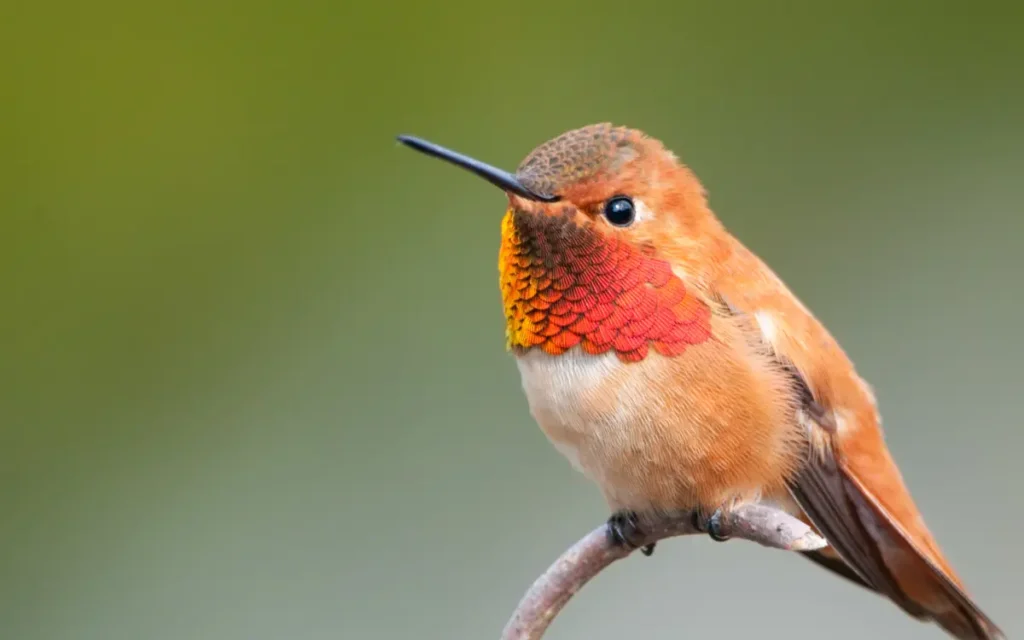
The Rufous Hummingbird is known for its amazing migration. They travel a long way, from Mexico to Alaska! They are small with a bright orange color on their back and belly.
Males have a shiny red throat. Rufous Hummingbirds are brave and often chase away other birds, even bigger ones! They love eating nectar from colorful flowers and catching tiny bugs in the air.
It’s not common to see them in South Carolina, but they sometimes visit during winter. Their bright colors and bold behavior make them special to see.
- Length: 3 – 4 in(7.6 – 10.2 cm)
- Weight: 0.1 – 0.2 oz (2 – 5 gm)
- Wingspan: 4.3 in (11 cm)
5. Anna’s Hummingbird (Calypte anna):

Anna’s Hummingbird, named Calypte Anna, usually lives along the Pacific coast, in places like gardens and parks. They like areas with lots of flowers and trees. These birds are very noisy, often chirping and making loud sounds, especially the males.
They are known for their boldness and aren’t shy around people. It’s very rare to see them in South Carolina, so if you do, it’s a big deal! They mostly stay in the west, making any visit to South Carolina a special surprise for bird lovers.
- Length: 3.9 – 4.3 in (10 – 11 cm)
- Weight: 0.1 – 0.2 oz (3 -6 gm)
- Wingspan: 4.7 in (12 cm)
6. Calliope Hummingbird (Selasphorus calliope):

The Calliope Hummingbird is a tiny bird with a big journey. They live in the mountains and like forests with lots of trees. Even though they’re small, they make a pretty sound, but it’s not very loud.
Seeing this bird in South Carolina is rare. They usually stay in the western part of the United States and Canada. If you see one in South Carolina, it’s a very special sight because they don’t visit often. Their long trip and small size make them an interesting bird to learn about.
- Length: 3.1 – 3.5 in (8 – 9 cm)
- Weight: 0.1 – 0.1 oz (2.3 – 3.4 gm)
- Wingspan: 4.1 – 4.3 in (10.5 – 11 cm)
7. Broad-tailed hummingbird (Selasphorus platycercus):
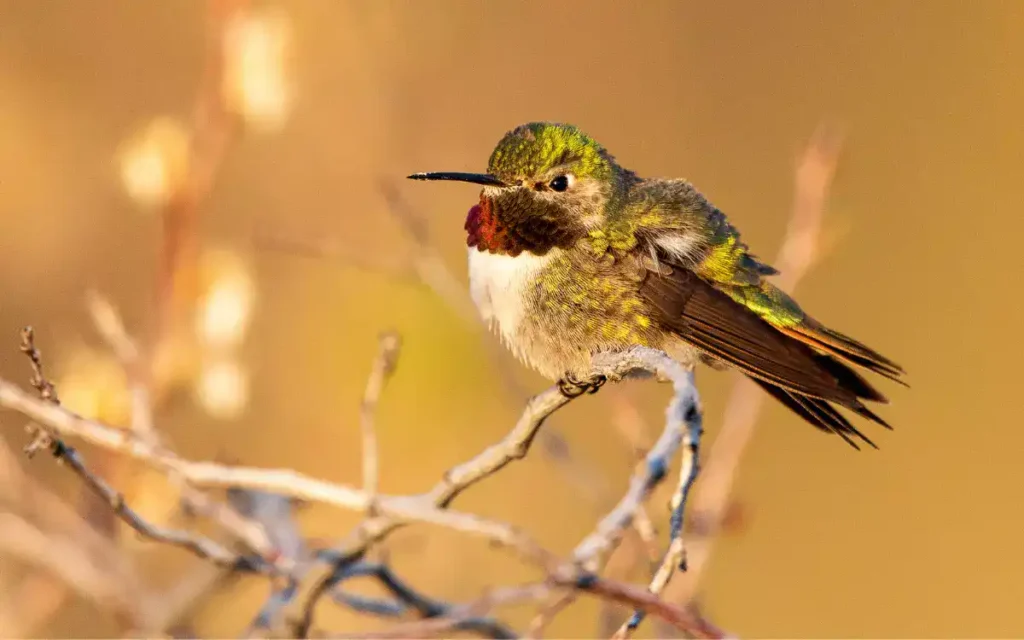
The Broad-Tailed Hummingbird loves high mountain areas and open woodlands. They are known for their unique sound, with the males making a high-pitched trill with their wings as they fly.
These hummingbirds aren’t usually found in South Carolina, so seeing one there is pretty unusual. They mostly live in the western United States, from rocky mountains to cool forests.
- Length: 3.1 – 3.5 in (8 – 9 cm)
- Weight: 0.1 – 0.14 oz (2.8 – 4.5 gm)
- Wingspan: 4.7 – 5.5 in (12 – 14 cm)
8. Allen’s Hummingbird (Selasphorus sasin):
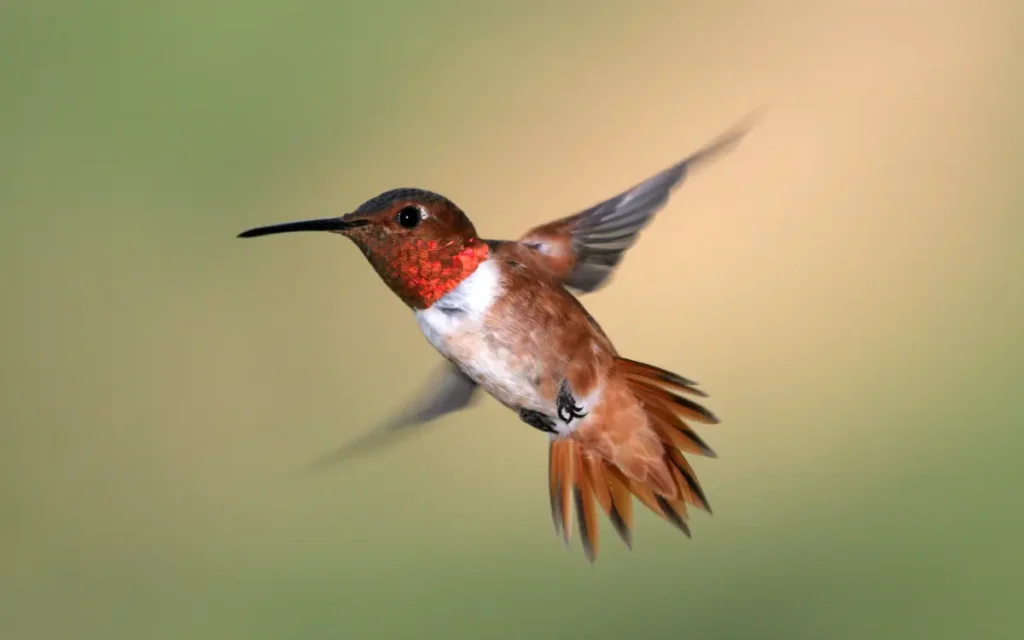
Allen’s Hummingbird, named Selasphorus sasin, is a small bird with a green back and orange-red throat. They build their nests out of plant down and spider silk, often in trees or shrubs. They lay tiny eggs, about the size of jellybeans.
These hummingbirds are rarely seen in South Carolina, mostly living along the Pacific Coast. When they do visit South Carolina, it’s quite unusual and exciting for bird watchers. Their bright colors and unique nesting habits make them interesting birds to learn about.
- Length: 3.5 in (9 cm)
- Weight: 0.1 – 0.1 oz (2 – 4 gm)
- Wingspan: 4.3 in (11 cm)
Read also:
9. Blue-throated Mountaingem (Lampornis clemenciae):
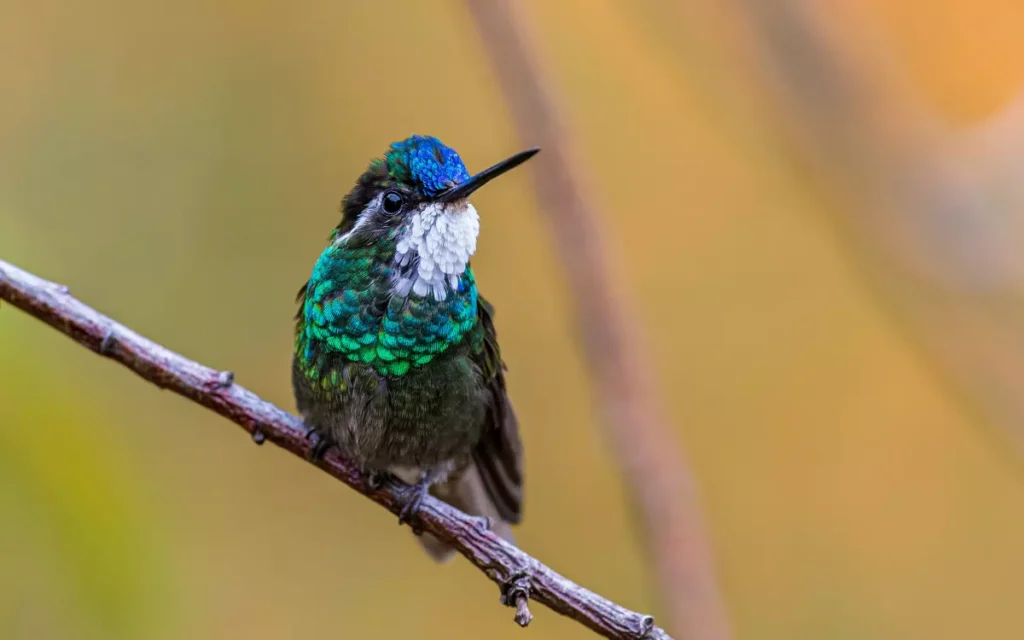
The Blue-Throated Mountaingem is a big hummingbird with a shiny blue throat and grey belly. They build nests on cliffs or walls, unlike other hummingbirds who use trees.
These birds live mostly in mountain forests from Mexico to El Salvador. It’s super rare to see them in South Carolina. If they show up, it’s a big deal because they usually don’t travel that far.
They stand out because of their size and the bright blue color on their throats, making them special to bird watchers.
- Length: 4.4 – 5.0 in (11 – 12 cm)
- Weight: 0.30 oz (8.4 gm) and females 0.24 oz (6.8 gm )
- Wingspan: 6.7 – 7.5 in (17 – 19 cm)
10. Broad-Billed Hummingbird (Cynanthus latirostris):
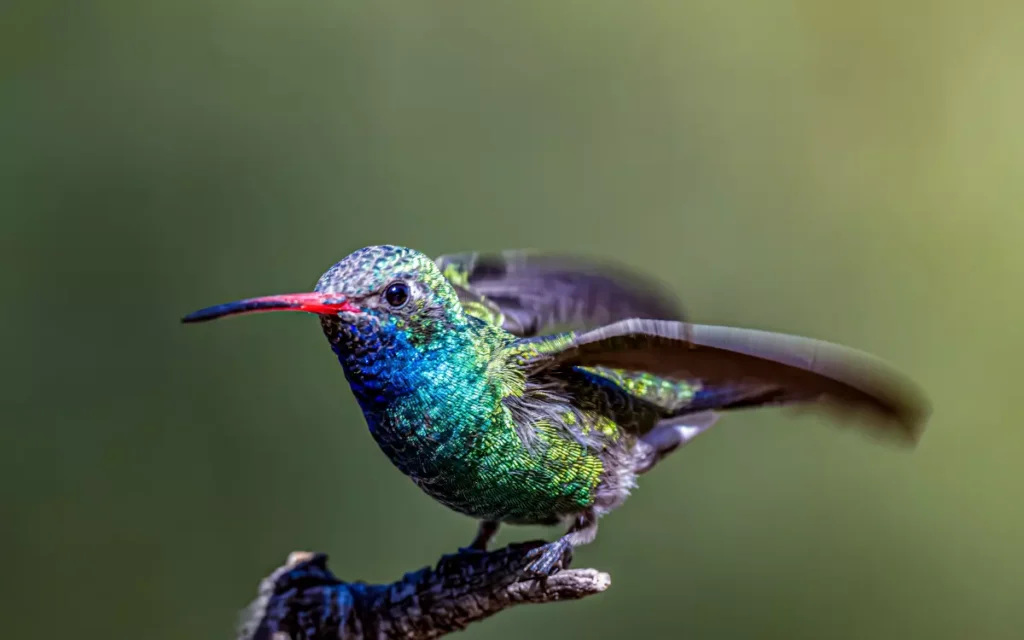
The Broad-Billed Hummingbird is a small, brightly colored bird. The males have a shining green body with a blue throat and a striking red bill with a black tip. The females are less colorful but still pretty.
They build their nests out of tiny plant fibers and spider webs, usually hanging them on tree branches. These birds are mostly found in Mexico and occasionally in Arizona.
Seeing one in South Carolina is very rare, making it a special event for bird watchers. Their vivid colors and unique red bill make them easy to recognize.
- Length: 3.5 – 4 in (8.9 – 10.2 cm)
- Weight: 0.106 – 0.159 oz (3 – 4.5 gm)
- Wingspan: 4.5 – 5 in (11.4 – 12.7 cm)
Plants in South Carolina That Attract Hummingbirds:
| Plant Name | Description | Attraction for Hummingbirds |
| Canadian Columbine (Aquilegia canadensis) | Bell-shaped flowers with red and yellow colors. Grows well in partial shade. | A favorite among hummingbirds, blooms in spring providing early nectar. |
| Crossvine (Bignonia capreolata) | Trumpet-shaped flowers that are bright orange and yellow. Can climb walls and fences. | Attracts hummingbirds with its colorful flowers and nectar. |
| Trumpet Vine (Campsis radicans) | Large, trumpet-shaped, orange-red flowers. Grows well in warm climates. | Irresistible to hummingbirds, great for covering arbors or trellises. |
| Fringed Bleeding Heart (Dicentra eximia) | Pink and white heart-shaped flowers. Suitable for shady areas. | Offers a different kind of nectar source for hummingbirds. |
| Cardinal Flower (Lobelia cardinalis) | Bright red flowers, very striking appearance. | Especially attractive to hummingbirds due to vibrant color and rich nectar. |
Adding these plants to your garden not only beautifies the space but also supports the local wildlife. While looking for hummingbirds, you might also come across various black birds in South Carolina. These birds, though different from hummingbirds, add to the biodiversity and beauty of South Carolina’s natural habitats.
FAQs :
1. Where do South Carolina hummingbirds migrate to?
Ans: Most South Carolina hummingbirds, especially the Ruby-Throated Hummingbird, migrate to Central America, specifically Mexico and Panama, for the winter.
2. Where in South America are the hummingbirds?
Ans: Hummingbirds in South America are widespread, particularly in countries like Ecuador, Peru, and Colombia, which are known for their diverse hummingbird species.
3. What states are hummingbirds most common?
Ans: In the United States, hummingbirds are most common in states with warmer climates and rich floral diversity, such as Arizona, Texas, and California.
4. Have the hummingbirds left North Carolina?
Ans: Ruby-throated hummingbirds, common in North Carolina, typically migrate south for the winter around late September to early October, and return in the spring.
Conclusion:
In South Carolina, hummingbirds, like the Ruby-Throated and occasional rare species, add beauty and excitement to our gardens. By planting specific flowers, we can attract these amazing birds and enjoy their vibrant presence. Remembering these small wonders enhances our appreciation for South Carolina’s rich natural diversity.

